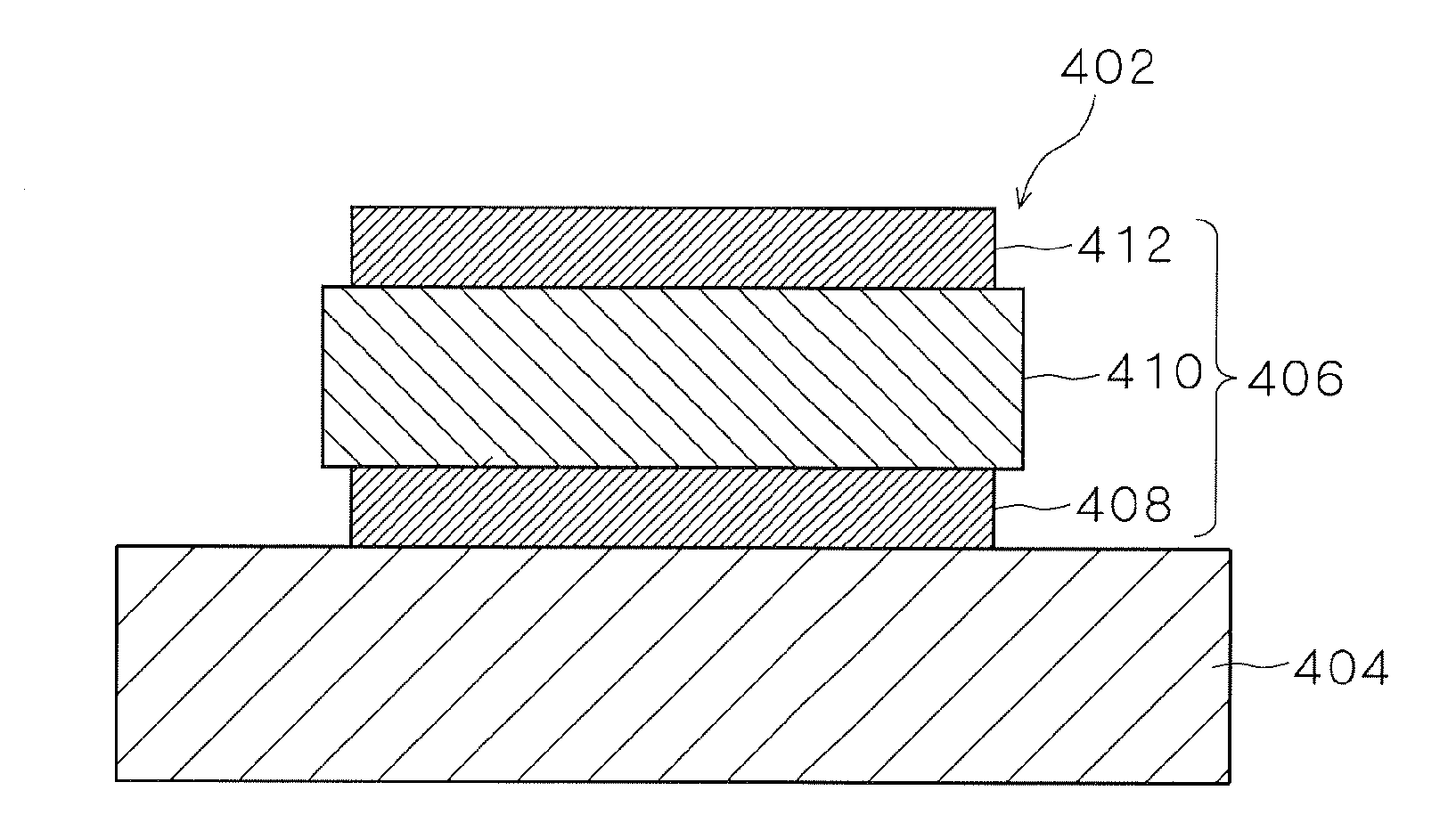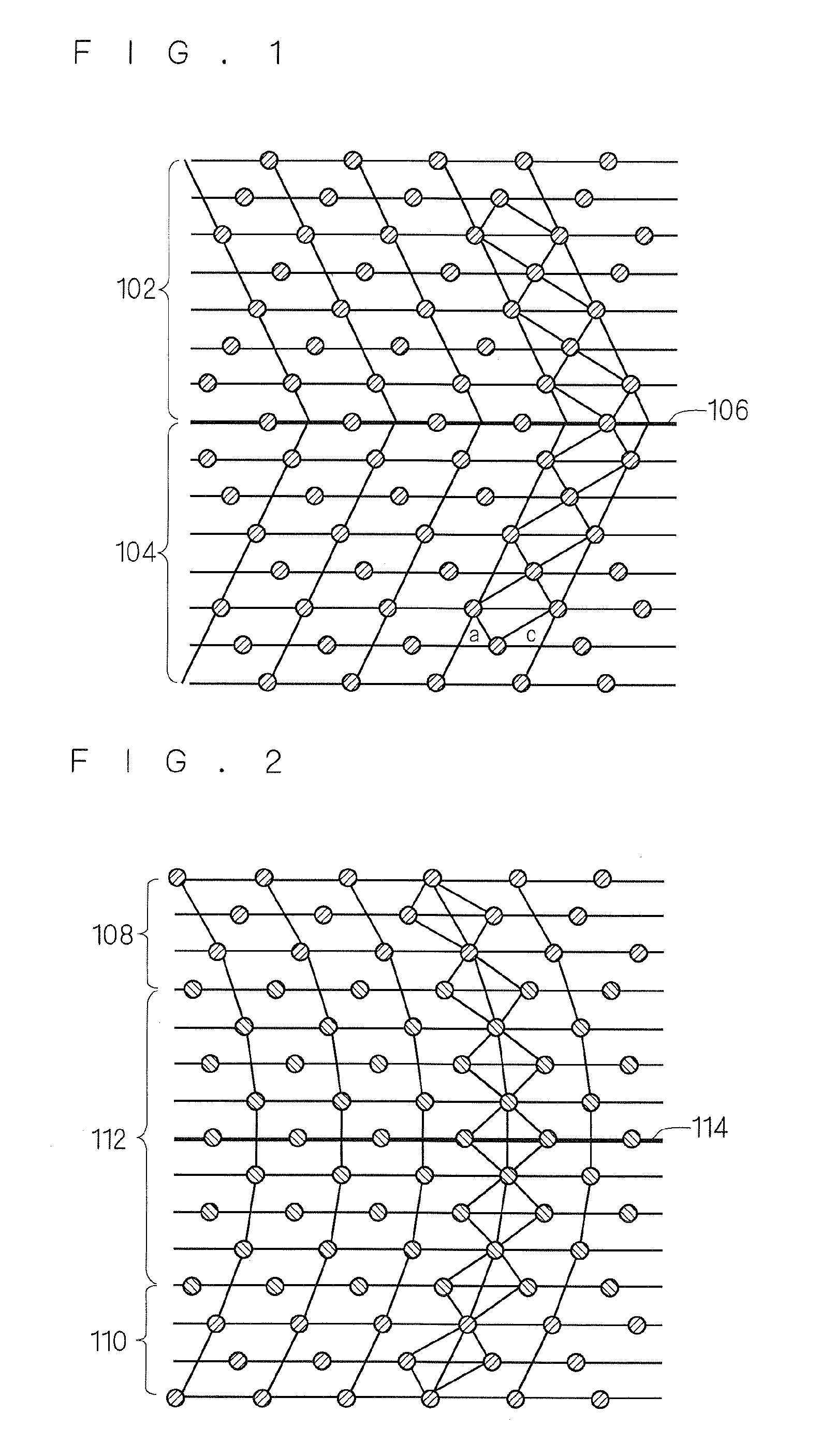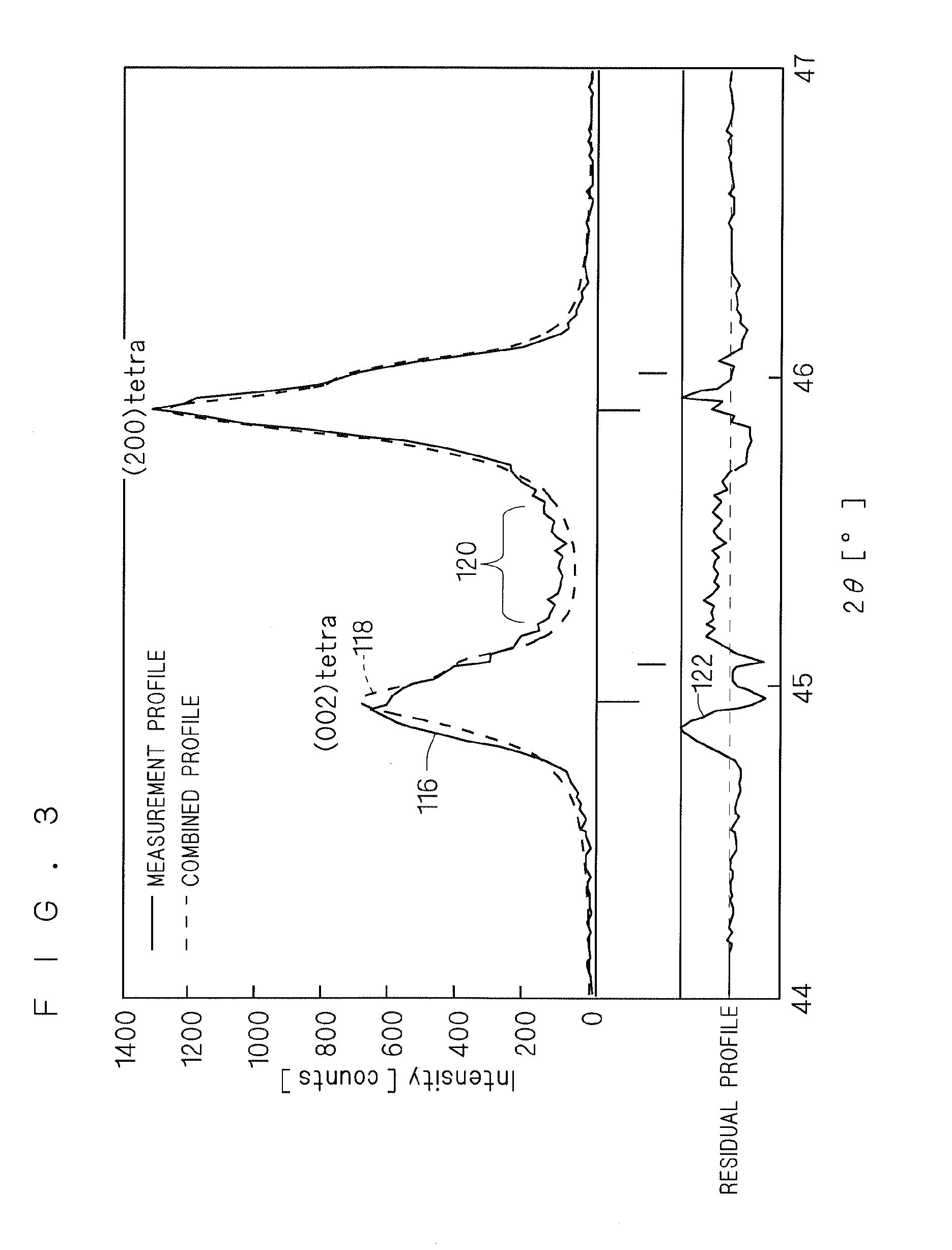Piezoelectric/electrostrictive ceramics sintered body and method of calculating diffuse scattering intensity ratio
a technology of electric field and sintered body, applied in the direction of radiation diffraction, material analysis using wave/particle radiation, device material selection, etc., can solve the problem of electric field-induced strain during application of high electric field, and achieve the effect of reducing the strain
- Summary
- Abstract
- Description
- Claims
- Application Information
AI Technical Summary
Benefits of technology
Problems solved by technology
Method used
Image
Examples
first embodiment
1. First Embodiment
[0045]A first embodiment of the present invention relates to a piezoelectric / electrostrictive ceramics sintered body.
1.1 Composition
[0046]The piezoelectric / electrostrictive ceramics sintered body according to the first embodiment is an (Li, Na, K)(Nb, Ta)O3-based piezoelectric / electrostrictive ceramics sintered body having, as a main crystal phase, a perovskite type oxide containing at least one type of element selected from the group consisting of Li (lithium), Na (sodium) and K (potassium) as A site constituent elements, and at least one type of element selected from the group consisting of Nb (niobium) and Ta (tantalum) as B site constituent elements.
[0047]A composition of main components is represented by a general formula {Liy(Na1-xKx)1-y}a(Nb1-zTaz)O3 and preferably satisfies 0.9≦a≦1.1, 0.2≦x≦0.8, 0.0≦y<0.1 and 0.0≦z≦0.5. The reason for setting 0.9≦a≦1.1 is as follows. If a is below this range, a degree of sintering tends to fall. If a exceeds this range, th...
second embodiment
2. Second Embodiment
[0076]A second embodiment of the present invention relates to a method of calculating a degree of c-axis orientation and a diffuse scattering intensity ratio.
2.1 Method of Calculating Degree of C-Axis Orientation and Diffuse Scattering Intensity Ratio
[0077]FIGS. 6 and 7 are diagrams illustrating the method of calculating the degree of c-axis orientation and the diffuse scattering intensity ratio according to the second embodiment. FIG. 6 is a flowchart showing a flow of calculation of the degree of c-axis orientation and the diffuse scattering intensity ratio according to the second embodiment. FIG. 7 is a chart showing an example of an X-ray diffraction profile according to the second embodiment. FIG. 7 shows an X-ray diffraction profile at angle 2θ=44° to 47° at which a peak appears on a (002) plane in the tetragonal system (denoted by “(002)tetra” in FIG. 7) and a peak appears on a (200) plane in the tetragonal system (denoted by “(200)tetra” in FIG. 7).
(a) Me...
third embodiment
3. Third Embodiment
[0097]A third embodiment relates to a method of manufacturing a piezoelectric / electrostrictive ceramics sintered body suited for manufacturing the piezoelectric / electrostrictive ceramics sintered body according to the first embodiment.
[0098]FIG. 8 is a flowchart showing a flow of manufacture of the piezoelectric / electrostrictive ceramics sintered body according to the third embodiment.
(a) Produce Piezoelectric / electrostrictive Ceramics Powder (Step S301)
[0099]For manufacturing the piezoelectric / electrostrictive ceramics sintered body, piezoelectric / electrostrictive ceramics powder having the composition described in “Composition” according to the first embodiment is first produced (step S301). At this time, piezoelectric / electrostrictive ceramics powder having slightly adjusted composition may be produced in view of volatilization, diffusion and the like during firing.
(b) Forming (Step S302)
[0100]Next, the piezoelectric / electrostrictive ceramics powder produced in...
PUM
| Property | Measurement | Unit |
|---|---|---|
| width | aaaaa | aaaaa |
| 2θ | aaaaa | aaaaa |
| radius | aaaaa | aaaaa |
Abstract
Description
Claims
Application Information
 Login to View More
Login to View More - R&D
- Intellectual Property
- Life Sciences
- Materials
- Tech Scout
- Unparalleled Data Quality
- Higher Quality Content
- 60% Fewer Hallucinations
Browse by: Latest US Patents, China's latest patents, Technical Efficacy Thesaurus, Application Domain, Technology Topic, Popular Technical Reports.
© 2025 PatSnap. All rights reserved.Legal|Privacy policy|Modern Slavery Act Transparency Statement|Sitemap|About US| Contact US: help@patsnap.com



